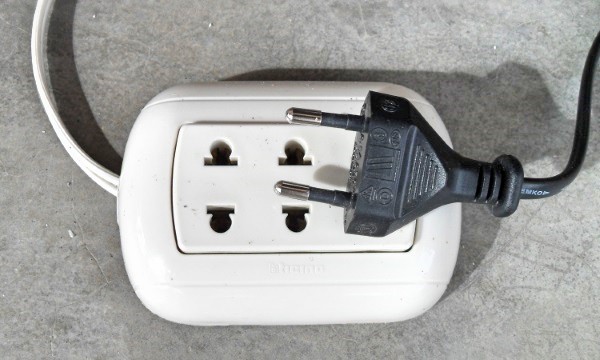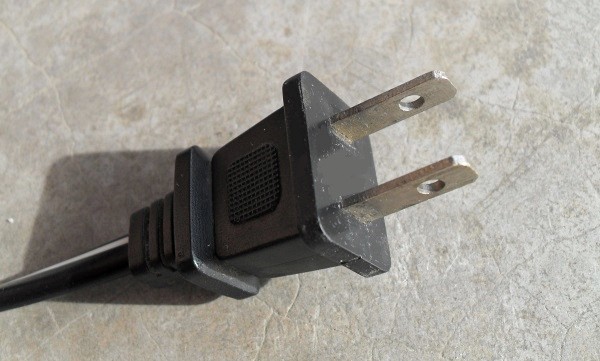When you’re planning a trip to Peru, you probably don’t think much about how you’ll charge your devices or plug in your appliances. But knowing about the country’s electrical system can save you from frustration and extra costs.
Peru uses specific plug types and voltage that might differ from what you’re used to. In this article, we’ll cover everything you need to know about electrical outlets, plug types, voltage, and what to bring with you to keep your devices running smoothly.
Let’s make sure you’re prepared so that all you have to worry about is enjoying your time in Peru.
Understanding the electrical system in Peru is important to ensure that all your devices can work properly during your trip. Peru’s electrical infrastructure is modern, especially in major cities, but the system may differ from what you’re used to at home.
Here’s a detailed guide to help you navigate the electrical outlets you’ll encounter.
Electrical outlets in Peru may look different from what you’re used to at home. Understanding the types of outlets you’ll encounter will help you prepare properly.
Type A outlets are the most commonly used in Peru. They feature two flat parallel prongs. However, there’s an important distinction to note: Peruvian Type A outlets typically accept two identical flat prongs.
This is different from the polarized Type A plugs found in the United States, where one prong is wider than the other. This means that if you’re traveling from the U.S. with devices that have a polarized plug (where the prongs are not the same size), you may need an adapter for it to fit.
While less common than Type A outlets, you may find Type B outlets in higher-end hotels and newer buildings, especially in urban areas. These outlets look similar to Type A, but with an added round grounding pin.
Type A plugs will generally fit into Type B outlets, but the reverse is not true, so if you have a Type B plug, make sure to check the outlet type before using it. If you are staying in a newer or more upscale establishment, you might come across this outlet type more often.
Type C outlets, which are commonly referred to as the European-style plug, use two round prongs. These outlets are also widely used in Peru, particularly in more modern buildings. Type C outlets are often found alongside Type A outlets, and in many cases, you’ll find electrical outlets designed to accommodate both plug types.
This means you can use a Type C plug in most places, but if your devices are designed for other types of plugs, you may need an adapter.
Electrical outlets in Peru are often designed to incorporate both plug types (see first image below).


When traveling to Peru, it’s important to be aware of the supply voltage, as it can differ significantly from what you’re used to at home. In Peru, the standard voltage is 220 volts at 60 hertz. This is much higher than the 110-120 volts typically used in countries like the USA.
Before plugging in any of your devices, ensure they can handle this higher voltage. If you try to use a device not rated for 220 volts, such as a hair dryer or a laptop charger, it could get damaged—or even fried—by the higher voltage.
Many modern electronics, such as laptops, cell phones, smartphones, and tablets, are designed to handle both 110 volts and 220 volts. These are known as dual-voltage devices. To be sure, check your device’s label or power supply block. It should list the voltage range it can handle. If your device supports 220 volts, you’re ready without additional equipment.
If you have an appliance or device that doesn’t accept 220 volts, you have a few options:
You might find a 110-volt socket in more expensive hotels specifically designed for foreign electrical devices. These are usually found in the room or bathroom, making it easier to plug in your electronics without needing a voltage converter. However, this is not always the case, so don’t expect this feature in standard hotels or hostels.
Peru operates on a frequency of 60 hertz (Hz), which is the same as in the United States and Canada. This is an important detail to consider, as many countries—especially in Europe—operate on 50 Hz.
While most modern appliances and electronics are built to handle both 50 Hz and 60 Hz, older or more specialized equipment might be affected by this difference. To ensure your devices will work properly, check the label on your device. Most modern electronics will indicate something like “INPUT: 100-240V, 50/60Hz”, confirming that they are compatible with both frequencies.
Understanding whether your devices are dual-voltage or single-voltage is key when traveling to Peru. Here’s a breakdown of the difference:
Dual-voltage devices are designed to work on both 110-120V and 220-240V electrical systems without the need for a converter. Most modern electronics, like laptops, smartphones, tablets, and camera chargers, are dual-voltage.
To confirm if a device is dual-voltage, simply check the power input specifications. A label like “Input: 100-240V” indicates that the device can work safely with Peru’s 220V supply. If your devices fall into this category, you won’t need any additional equipment to use them in Peru.
On the other hand, single-voltage devices are designed to work with a specific voltage range. Many appliances from the United States and Canada are single-voltage, typically operating on 110-120V.
These include some hair dryers, straighteners, electric shavers, and other personal grooming devices. If you try to plug a single-voltage device into a 220V outlet without a converter, it could get damaged.
If you’re traveling with single-voltage devices that aren’t compatible with Peru’s 220V system, you have a couple of options:
Before traveling to Peru with electrical appliances, check the voltage specifications printed on each device. For dual-voltage devices, you’re good to go. But you’ll need to decide whether to carry a voltage converter or leave it behind for single-voltage devices. Preparing in advance ensures your gadgets stay safe and functional throughout your trip.
Understanding the difference between adapters and converters is crucial for safely using your electrical devices in Peru.
A power adapter simply changes the shape of your plug to fit into a different type of outlet. It does NOT change the voltage. You should use a power adapter when:
A power converter, also called a transformer, changes the voltage from 220V to 110V. You should use a power converter when:
You’ll need a plug adapter if you’re packing appliances that do not fit either socket (such as a UK three-pronged plug). I use a FujiFilm World Travel Adapter, which doesn’t seem to be available right now but looks very similar to this Tektalk Universal World Travel Adapter.
It might be a bit excessive if you’re only going to one country, but it’s compact and perfect if you plan traveling throughout South America or beyond. It also adapts to both plug socket types used in Peru.
You can also buy plug adapters with built-in surge protectors. That extra layer of protection can be a wise investment, especially if you’re traveling in Peru with expensive electrical equipment.
While Peru’s electrical system is generally reliable, there are some potential risks to be aware of when using your devices.
Power surges can occur in Peru, especially during stormy weather or in more remote areas. These sudden increases in voltage can damage sensitive electronic equipment. To protect your devices:
Power outages and voltage fluctuations can occur in Peru, particularly in rural areas and during the rainy season (November to April). While major tourist destinations and urban centers typically have reliable power, it’s wise to:
Several adapter options are available for travelers to Peru, each with its own advantages.
Universal adapters are designed to work in multiple countries, making them ideal for travelers visiting Peru as part of a larger South American trip. When choosing a universal adapter for Peru, ensure it includes Type A and Type C plug configurations.
Many universal adapters also include USB ports, which can be convenient for charging multiple devices simultaneously.
USB wall chargers with interchangeable plugs offer a compact solution for charging USB devices like smartphones, tablets, and cameras. These typically include multiple USB ports and can be more space-efficient than carrying several individual chargers. Look for models with surge protection and fast-charging capabilities.
For travelers carrying multiple electronic devices, a travel power strip with a Peru-compatible plug can be invaluable.
These allow you to connect several devices to a single outlet, which is particularly useful in hotels or hostels with limited outlet availability. Some travel power strips also include USB ports and surge protection features.
Keep your phone and other devices charged up by traveling on Peru Hop, the only bus company in Peru with USB charging ports on every bus.
Pros:
Cons:
Pros:
Cons:
When traveling to Peru, it’s important to be prepared for the differences in electrical outlets and voltage. To ensure your devices work properly and safely, here are a few tips to keep in mind:
Preparing for Peru’s electrical system is an often-overlooked but crucial part of travel planning. By understanding the voltage, outlet types, and the need for specific adapters or converters, you can avoid damaging your devices and ensure you stay connected throughout your trip.
Peru uses 220V/60Hz electricity, with Type A (flat prong) and Type C (round prong) outlets being the most common. Most modern devices are dual-voltage and will work with just an adapter, while single-voltage appliances will need a voltage converter. Investing in good-quality adapters and a surge protector can help protect your electronics during your travels.
With proper preparation, you’ll be able to enjoy Peru’s stunning sights while keeping your devices charged and ready to capture all the unforgettable moments.
Peru Hop Voted #1 Travel Company Discover unbelievable destinations, experience unforgettable activities, meet other travelers, and do it all at your own pace with Peru Hop!
More Info 2018 to 2023 Tripadvisor’s Traveler’s Choice Award
